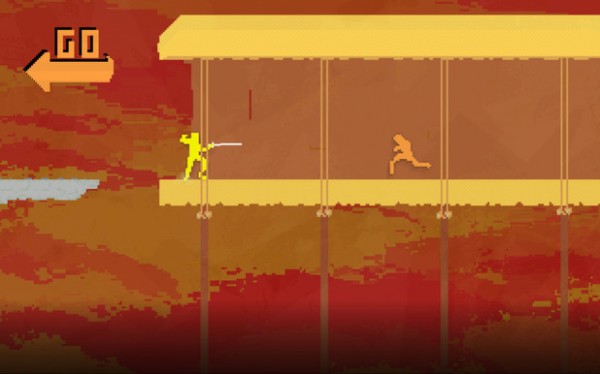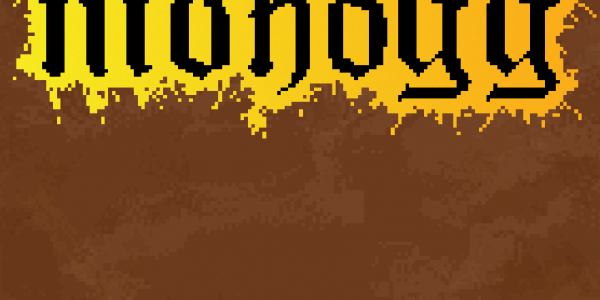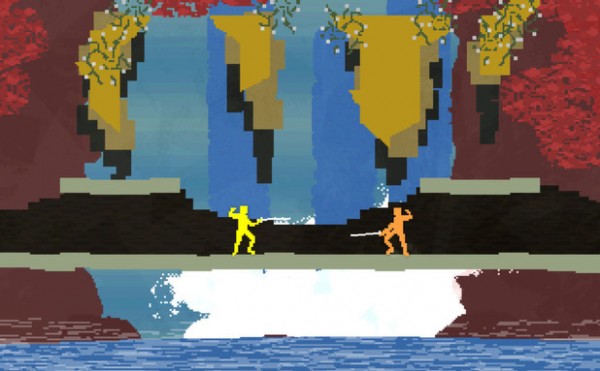Nidhogg has the potential to be truly special, but this review exists in a vacuum. I can only comment on present-day Nidhogg, and its flaws hold it back from something greater. Most notably, the online multiplayer appears to be busted 75 percent of the time, but the intensity of a local or lag-free online match cannot be denied. This is videogame competition at its finest.

Nidhogg spent the last few years gaining momentum in a series of independent tournaments and events, and that hardened experience defines the game. This is the kind of release that undergoes numerous alterations in an effort to find that perfect balance between entertainment and challenge, and Nidhogg succeeds brilliantly. Its encouragement of back-and-forth clashes between opponents creates distinctive moments that are simultaneously fun and nerve-racking.
The spirited sense of competition applies to all players, due in large part to the game’s minimal learning curve. In fact, the theme of minimalism applies to the entire experience. Nidhogg sports crudely simplistic visuals, contains only four levels, and requires only a couple of buttons to be played. It’s the kind of thing you wouldn’t put on the back of a videogame box, but the simplicity works in the game’s favor. Much of Nidhogg‘s charm stems from the fact that it gets its message across in just a few short moments – pick up the controller and go!
But behind that immediacy lies an impressive simplicity/complexity dynamic in which repeated matches reveal hidden depth. At its core, Nidhogg is a fencing game in which each player wants to stab his or her opponent and reach the other side, but the specific moves and strategies employed to achieve that goal are far more complicated. For example, when I play the game online I’m not afraid to take the cowardly approach. I’ll ignore all fighting in an effort to jump over my opponent and reach the other side – it’s up to the other player to adjust to my approach and play aggressive defense. That same methodological approach carries over to each new match, which quells concerns of repetition. I don’t get tired of playing Nidhogg because I have to adjust and stay on my toes all the time.
If there’s one thing that does keep me from playing Nidhogg, it’s the unreliable online multiplayer. I’ve participated in many matches that are nearly unplayable due to crippling lag that affects both the host and challenger (though the latter often gets the worse end of the deal). These issues popped up even when I played with people from my Steam friends list, which was especially troublesome. The ideal way to play Nidhogg is through local multiplayer, and my few experiences with it were an absolute blast. A friend and I went crazy with some of the gameplay toggles – I remember one particular match fondly, in which we turned off swords and took part in an epic divekick match. If only I lived in a world in which more people in my life were giddy at the thought of playing an indie fencing game. Perhaps it’s time to set up a local Nidhogg tournament in my neighborhood.
Even as I write this review, all I want to do is play more Nidhogg. Chances are I’ll load up 10 or so matches, only three of which will be playable. But the game’s fundamentally sound mechanics and penchant for intense competition allow me to partially ignore those key flaws, because those three potential matches will be glorious.



















